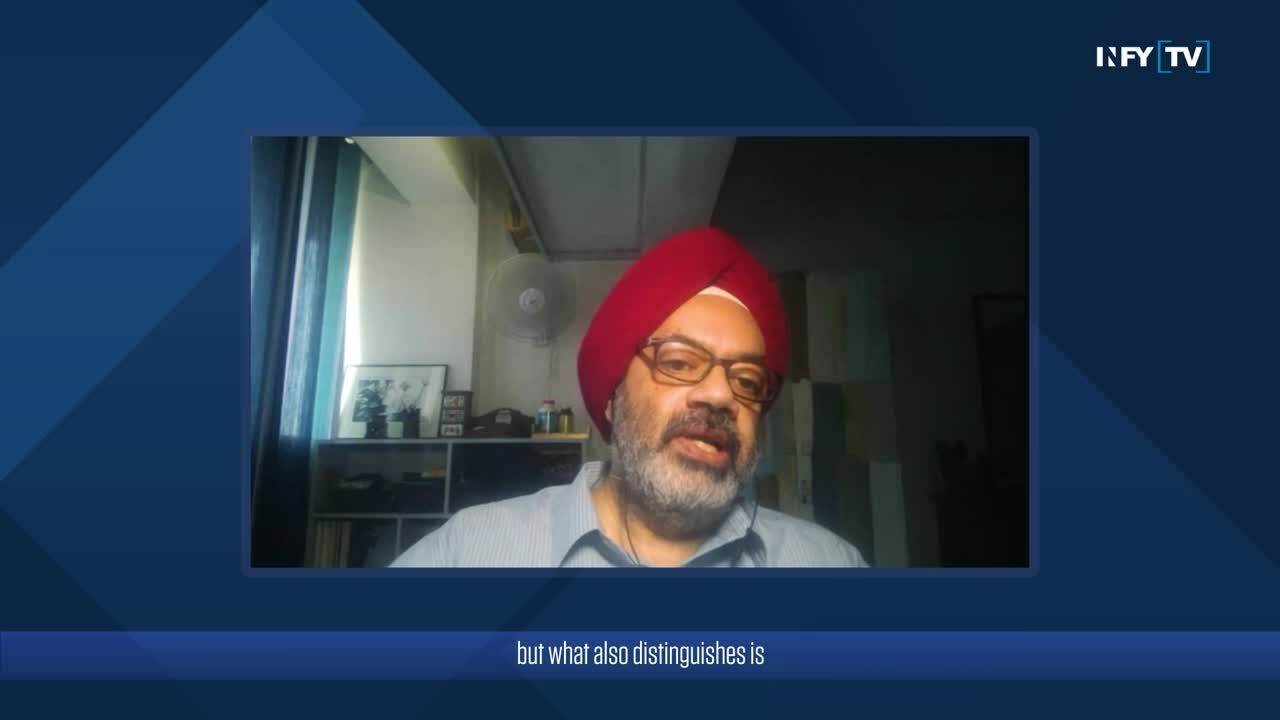
Fighting climate change with Science and corporate action: SBTi explained
As corporations rewire their businesses and processes to fight climate change, programs such as the Science Based Targets initiative work with them to chart a pathway for the future. Infosys' Bose Varghese and Damandeep Singh of CDP discuss in a candid chat.
The world is changing too fast, too soon. Climate change is upon the world, and its effects are for everyone to see. Organizations across the globe are privy to this reality, and as they realize that immediate action is crucial, they're seeking for ways to make the important decisions.
International non-profit organization CDP has an answer, which it is sharing with everyone willing to listen, and act upon. Some of the largest companies are doing it. Companies across the world, and across sectors are doing it.
But what is it that they’re doing? And why?
Damandeep Singh from the international non-profit organization CDP shares these answers and more around Science Based Targets (SBT), and the Science Based Targets initiative (SBTi), in a candid discussion with Bose Varghese, Head of Green Initiatives at Infosys.
“The methodology that evolved was to try and see what the world's whole carbon budget is, where do we stand, and how to attain that.” – Damandeep Singh, Head - CDP India Tweet
Singh, who heads CDP India, explains that the SBT program was brought together by four NGOs – CDP, World Resources Institute (WRI). WWF and UN Global Compact – with an intent to come up with an agreed methodology for organizations to consider aligning themselves with the Paris Agreement.
The Paris Agreement is an international framework that aligns nations in the efforts required to tackle climate change.
This methodology is based on a technical understanding, and is called Science Based Targets, and the initiative to bring companies together is called SBTi.
“The methodology that evolved was to try and see what the world's whole carbon budget is, where do we stand, and how to attain that,” says Singh. The Paris Agreement's initial goal that was initially set to a 2 °C scenario by the end of the century.
The methodology, says Singh, would take the larger models of the 2 °C scenario of the of the Paris Agreement, and then model it down, sector wise, to an organization's emission targets, and to help them chart a pathway to be compliant with the Paris Agreement.
“We had to align the Science-Based Targets very carefully with the internal goals.” – Bose Varghese
CDP works with companies as an independent body to help them set up targets to be Paris compliant.
“We are an NGO that works with companies and ask them to disclose that impact on climate change, and to see not just what they've done in the past, what they will do in the future,” says Singh, adding, “And, you have to take targets, not just for 2050, but … you have to take short-term and medium-term targets.”
Infosys, which is committed to remaining a carbon neutral company, recently aligned itself to the SBTi.
Read more about it here.
Committing to carbon neutrality is itself an ambitious goal, says Varghese.
“Today, we are at about 50% renewable energy, and the remaining 50% comes from the grid – comes from fossil fuel-based power plants, and there is a significant emission attached to it,” says Bose adding that Infosys has so far used offsets to attain carbon neutrality.
“We have this large basket of emissions coming from business travel, employee commute, and things like that and there is enough scope to actually reduce and take out these emissions,” he says.
Infosys furthered its goal for emissions reduction for all scopes – 1,2 and 3, under its 2030 ESG vision earlier in 2021.
Read the ESG Report 2020-21 here
With the association with the Science-Based Targets, Infosys aims to achieve the well-below 2 °C scenario.
“We had to align the Science-Based Targets very carefully with the internal goals,” notes Varghese, citing a plan to further the business ambition to reach the 1.5 °C scenario, a direction in which all the top leaders of the world are moving.
Varghese elaborates that the organization has set mid-term and long-term goals with the help of the incubator team at CDP.
“We went to projections of our emissions and we looked at emission reduction opportunities that we have,” says Varghese, adding that at the end of the analysis the team choose targets that are aligned to a well-below 2 °C scenario.
“Which is more ambitious than the 2 °C scenario but probably not as ambitious as the 1.5 °C scenario,” he says.
The organization has used its 2020 ambitions as the baseline emissions, with the mid-term targets slated for the year 2025, and the long-term targets for 2035.
But why should organizations join the campaign? Varghese asks Singh.
“The main reason is that this is aligned to science. And it is the same methodology across geographies,” says Singh, adding, “So, given the enormity of the climate change challenge, everybody's saying, ‘Look, we want to address those, but we want to address it on an even keel.’”
Singh wants everybody to come together - across geographies, and across boundaries. “And, it is on the same methodology, and that, sort of, helps bring companies on board from across territories,” he concludes.


